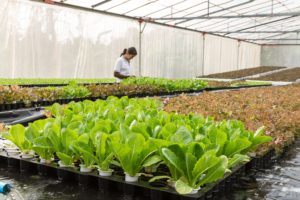
The state of Wisconsin boats the second highest number of organic farms and will now have $39.7 million for construction of a new facility to improve crop production. The Plant Germplasm Research Facility will support collaboration between U.S. Department of Agriculture (USDA) scientists and researchers from the University of Wisconsin-Madison to enhance regional crop quality. The new 50,000-square-foot facility will include dry lab space, multiple greenhouses, seed storage facilities, and other equipment to expand volume and diversity of local plant breeding efforts. Another $10 million earmark from the spending bill will fund construction of a new Institute for Rural Partnerships in Wisconsin.
In Graves, Louisiana, where agriculture is critical to the entire state’s economy, a $10 million earmark will be used for construction of a joint research and laboratory building along with multiple greenhouse facilities. The plan is for the USDA Sugarcane Research Unit to provide research and develop new sugarcane varieties. Another goal is for researchers to devise new production strategies capable of combatting pest-related setbacks to crop yield.
A $10 million earmark for Vermont will establish an Institute for Rural Partnerships at the University of Vermont. Researchers will identify pressing challenges that rural communities face, including broadband connectivity, water quality, and other infrastructure shortfalls. State leaders will have another $5 million to establish a national Farm to School Institute at Vermont’s Shelburne Farms. This facility will offer technical and practical assistance to the programs.
The state of Pennsylvania was awarded $1.4 million for a business incubator slated for rural communities, and $4.5 million will go toward Illinois’ National Center for Agricultural Utilization Research Expansion.
Numerous earmarks were approved for projects to bolster broadband connectivity. In Virginia, rural communities in the County of Charles City will soon receive a $2.6 million earmark for a countywide broadband expansion project.
The township of Pembroke, Illinois, was approved for $3 million to expand broadband access to 850 new residences, businesses, and community institutions. The region’s rural population lacks telecommunications, energy infrastructure, wireline broadband, cellular, and natural gas services.
Minnesota’s Goodhue and Pine counties also will receive funding for broadband expansion projects. Goodhue County’s $3.2 million earmark will begin the expansion initiative.
Pine County’s $5.6 million earmark will allow the expansion of broadband to 2,440 households and businesses. The county has been ranked 86th out of 87 for counties with the worst broadband in the state.
Earmarks were also approved to fund water infrastructure in many less populated parts of the country. A rural water system that extends across Iowa, Minnesota, and South Dakota is set to receive $21.9 million in earmarked funding. The new revenue will be part of a project for $70 million in work on the Lewis & Clark Rural Water System.
A $5 million earmark will fund a project for construction of treatment lines, water storage tanks, a pump station, and water meters in Oklahoma’s rural Cherokee County. The work is needed to promote public health by providing a safe source of drinking water to citizens and a small rural school.
Other earmarks will fund new health-care and public safety projects. The state of Alaska received $9.9 million for the Native Tribal Health Consortium. Another $27.6 million is available to expand the Alaska Native Medical Center’s Emergency Department, which currently takes in patients from surrounding rural regions.
A $4 million earmark will be used to replace the Memorial Hospital of Lafayette County, Wisconsin with an estimated project cost of $51 million. Wisconsin’s public safety infrastructure is also benefitting from earmarks. The city of Platteville will receive $7 million for a new fire station.
Mobility-related earmarks include a $1.5 million for Minnesota’s rural freight mobility and safety project scoped for Carver County. The project includes reconstructing an aged roadway and addressing high crash rates by reconfiguring dangerous intersections. This project, which is currently in final design, is expected to reach a cost of $59.4 million.
These are but a few examples of hundreds of upcoming projects that are a result of the earmarks. The new funding will initiate numerous opportunities for public-private partnerships.






